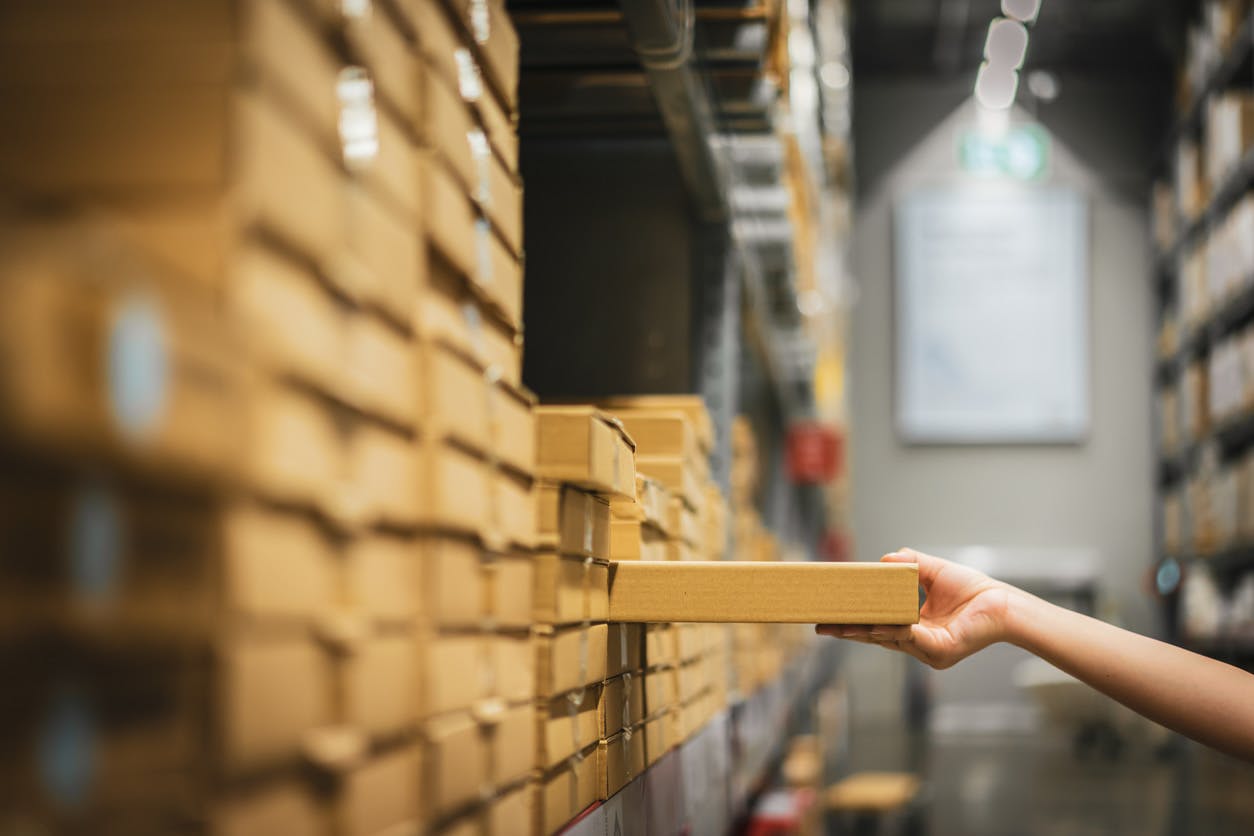September 28, 2020
Ecommerce companies sending out goods to customers need pack services. They can do the order fulfillment themselves, or they can outsource it to fulfillment centers. There are pros and cons to each ecommerce fulfillment strategy but understanding the fulfillment process will help your company decide which to use, and what to look for if you decide to contract with a fulfillment warehouse.
It’s important to understand the high-level supply chain picture in how an order makes its way real-time through the order process. The customer places an ecommerce order, which goes into the inventory management system and warehouse management system (WMS). That can help determine which warehouse should fulfill it, if using distributed warehousing. The order is picked up by the fulfillment location. The order is sent to a picker who finds the item. Likely another staff member puts it in packaging and applies a shipping label. The package is picked up by the carrier and delivered to the customer.
There’s variation, though, in how the pick and pack fulfillment happens, and that can affect accuracy rate, shipping costs, customer satisfaction and other factors important to an online store’s success.
Pick and pack methods for the fulfillment process
Here are some of the options a fulfillment warehouse might use for order picking. The items may be on a pallet or in a bin, or some other kind of shelving system.
Piece picking: As the order comes in, a picker picks up each item by hand to complete the order. The picker has a list of items which may have them walking throughout the entire fulfillment warehouse for that one order. This is not the most efficient method, but it’s the simplest.
Batch picking: The picker will gather all items for assigned orders in batches, rather than when they come in one-by-one. This is more efficient than piece picking, as several orders may need items from the same pallet or shelf. There is also more for the picker to pay attention to, and it can decrease order accuracy.
Zone picking: Pickers are assigned to one area of the warehouse for the fulfillment process. They stay in that area to pick up orders sent to that area. Sometimes orders involve multiple areas of the warehouse. With the zone picking method, the order is then sent to another area, sometimes on conveyor belts or using robots. This is efficient for the pickers as they don’t spend as much time traveling through the warehouse.
Wave picking: Using both batch picking and zone picking, pickers still stay in one zone, but pick items for multiple orders at once, a batch approach. This can be more cost-effective than piece picking.
Trends in pick and pack fulfillment services
Not only is it hard to hire and train warehousing workers, but the picking process is ripe for automation. Some fulfillment services use automation, including robots, for various parts of the picking process and pack operations. Robots have been found to be cost-efficient and can work nearly around the clock. They sometimes work alongside human pickers or those kitting orders, to help pick in the zone picking or batch picking methods. Amazon uses robots to move the mobile shelving units to the pickers, so they can put the items into crates to send on a conveyor belt for their packing materials and shipping labels.
Another trend is greater use of inventory management systems and warehouse management systems to track the items, assist with order accuracy, planning, and avoiding stockouts. The WMS needs to track the barcode or SKUs of all inventory in stock to track it.
Benefits of pick and pack fulfillment services
Outsourcing order fulfillment allows an online store to focus on other priorities. A fulfillment partner that offers different storage facilities can move items closer to the customers. That results in shipping savings and faster delivery, hence better customer service. A fulfillment center focusing on the fulfillment process will likely have a higher order accuracy rate and better quality control, since they focus on the fulfillment process. These facilities may also give the ecommerce company access to their WMS, providing visibility into the inventory management process, helping with the supply chain planning process.
Pick and pack fulfillment services buy and offer multiple packing types, which can result in savings to the online store as well. There’s no need for the company to purchase a large selection of packaging materials for every size, and by using appropriate-sized packaging, shipping costs are lower. These fulfillment services often specialize in kitting services, so subscription box companies know their customers will get an excellent product.
Choosing the right fulfillment process and fulfillment partner is a big decision for ecommerce companies. Fortunately, companies don’t have to reinvent the wheel. There are excellent fulfillment centers across the country to act as fulfillment partners, and some offer different storage facilities based on location needs. Stord can help you find and operate the best pick and pack fulfillment for your needs.




